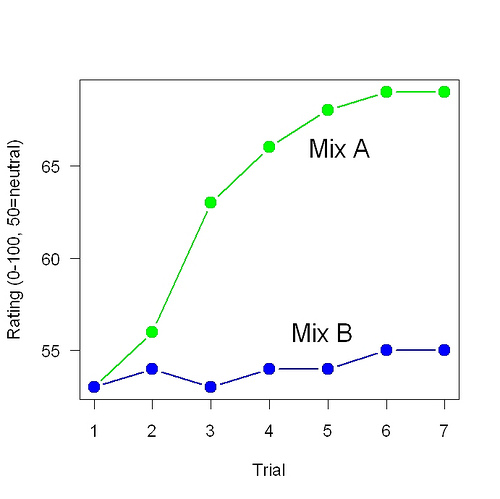I finished a better-designed calorie-learning experiment. I mixed 5 randomly-chosen spice mixes into one chunk of butter (Mix A) and another 5 spice mixes into another chunk of butter (Mix B). Then I alternated two types of trials:
1. 2 saltines spread with Mix A followed by a piece of bread eaten nose-clipped.
2. 2 saltines spread with Mix B followed by nothing.
On each trial I rated how good the saltines tasted on scale where 50 = neutral, 60 = slightly good, and 70 = somewhat good. Here are the results:

When a new flavor was followed by a piece of bread, it tasted better than a similar flavor not followed by a piece of bread. After several flavor-bread pairings, the difference became large.
Interesting and plausible.
I’m wondering if it’s not just the calories from the bread but the “sugar spike” from the carbs in the bread?
Could you try a similar experiment using an isocaloric NC follow-up item for both A and B but one follow-up being carbs and the other being protein or some other item that doesn’t quickly raise your blood sugar?
SusanJ, as far as anyone can tell, other calorie sources, such as protein and fat, also produce this learning, which surely predates foods that are quickly digestible, such as bread. Because rats and other mammals show this learning, it must have evolved long ago.
I suspect the sugar spike has something to do with how you interpret how good something tasted.
/”I’d like to buy the world a Coke and keep it company.”/